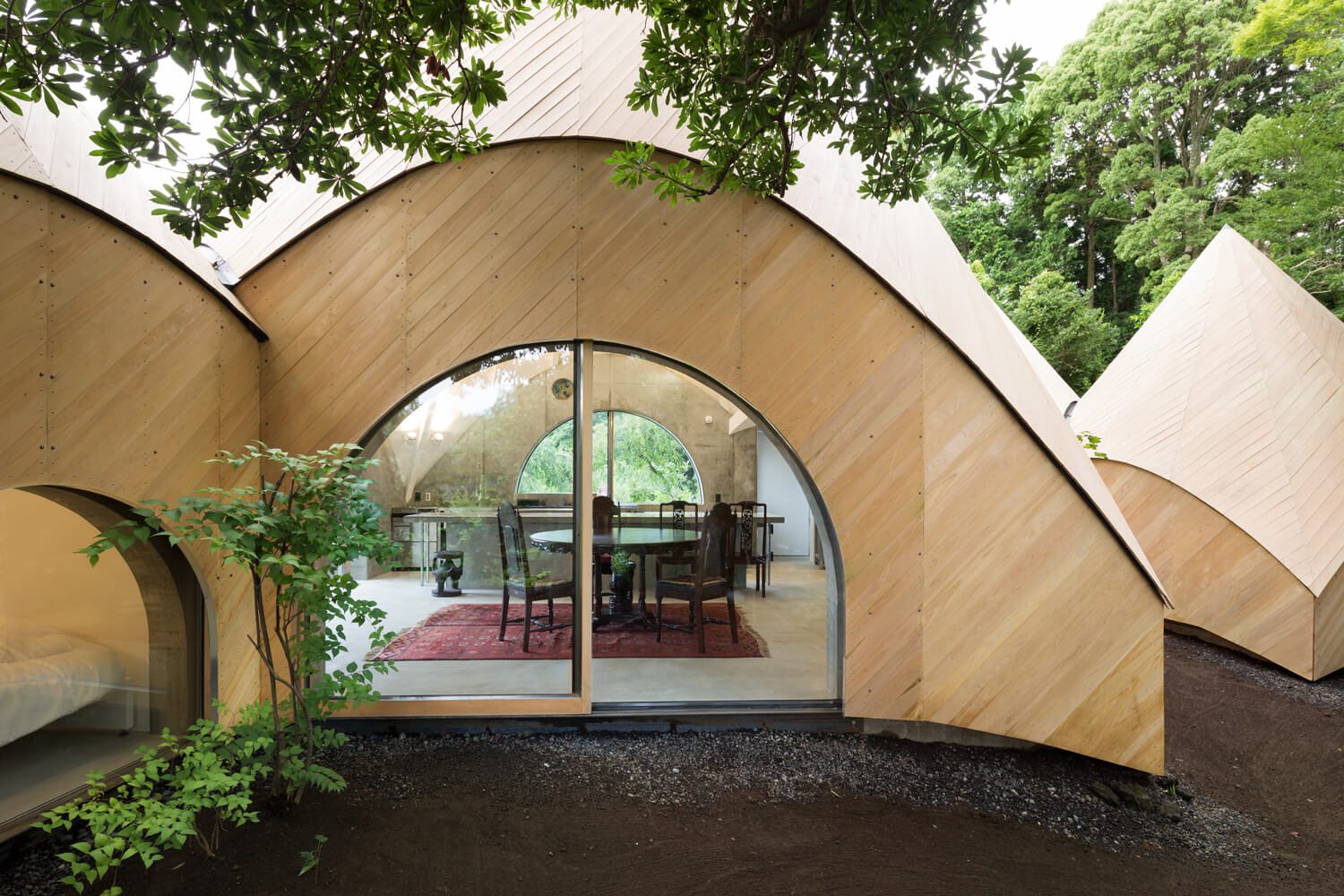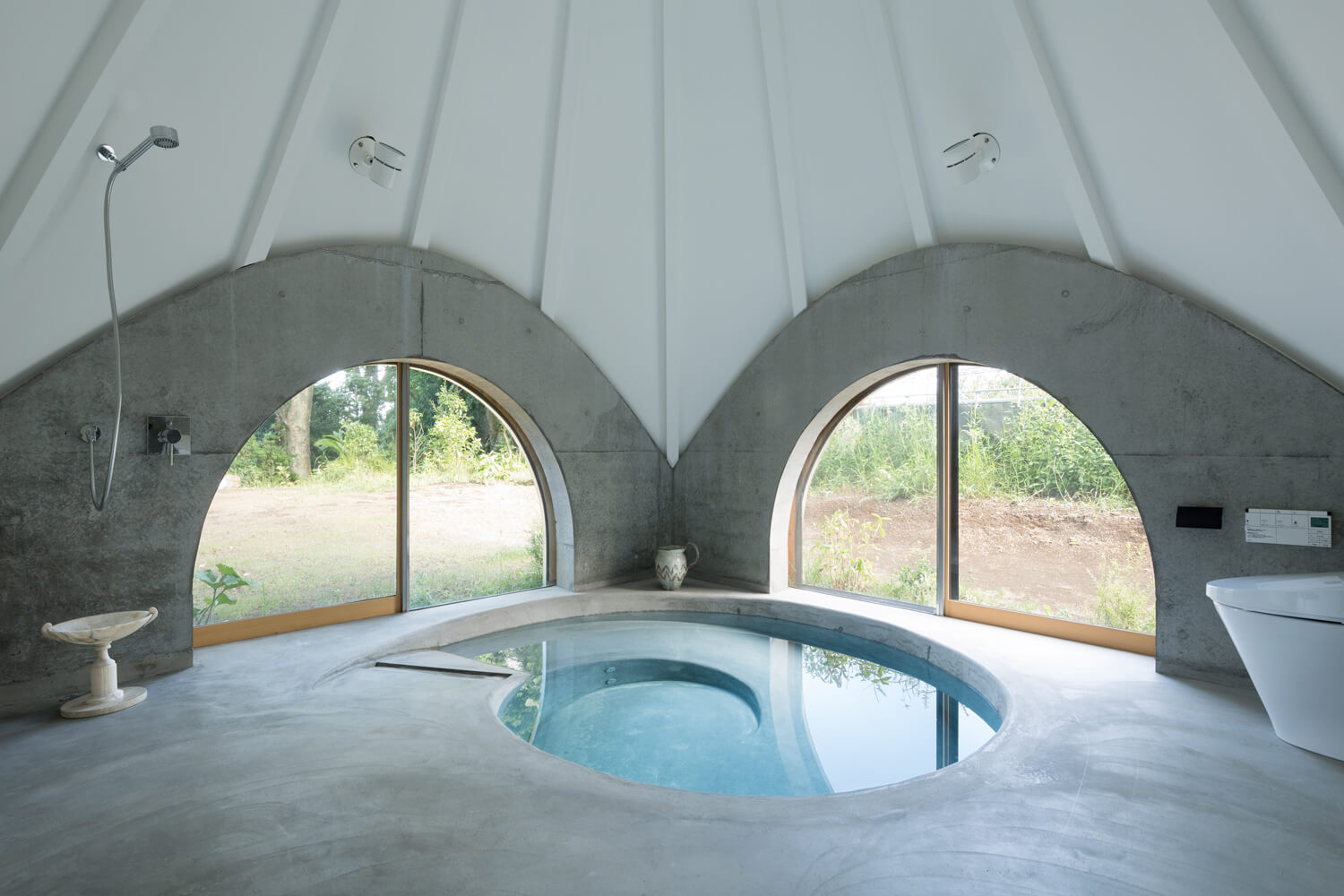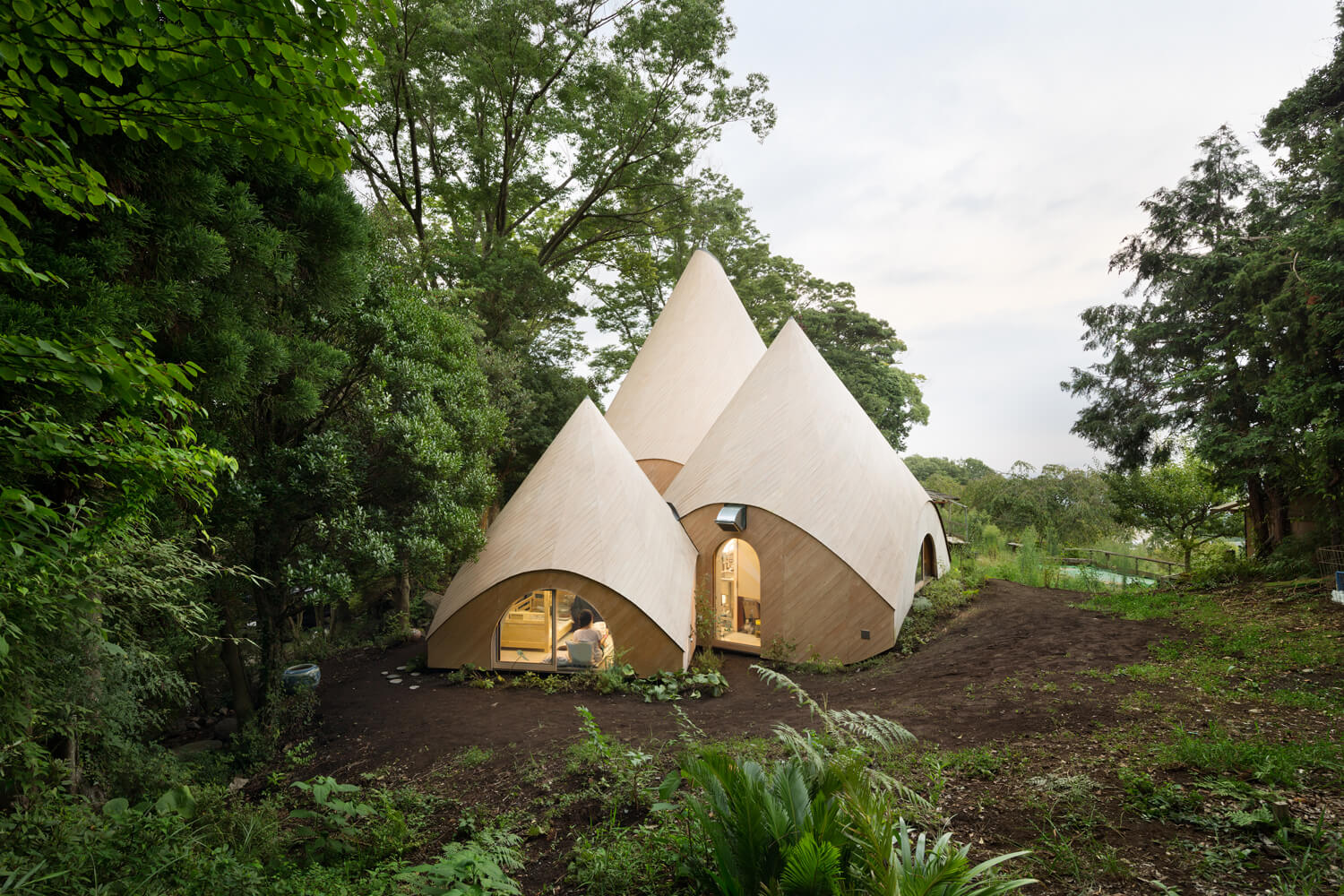A Tepee-Style House in the Heart of the Mountains
Architect Issei Suma designed Jikka, an entirely wooden structure, to welcome elderly people from the Shizuoka region.

© Takumi Ota
In the heart of the mountains in Shizuoka Prefecture, not far from Mount Fuji, stand five wooden cones that resemble tepees. These structures, which look as they have come straight from the imagination of Hayao Miyazaki, are in fact the work of Japanese architect Issei Suma. Two women asked him to design a space that they could use to live in, but also to serve their community by rebuilding a social connection between lonely people.
Issei Suma did exactly that through this architectural project consisting of five interconnected tepees with a total surface area of 100 m2, which goes by the name of Jikka. The two sixty-somethings, one of whom is a former social worker and the other a cook, invite inhabitants from the surrounding area, many of whom are elderly and isolated, to come and spend time with them, whether for an afternoon coffee or for several days (one of the tepees serves as a guest room).
Elderly people can therefore escape loneliness for a while by forging new connections with the residents of Jikka and the other inhabitants who come to visit. The duo also offer a meal delivery service for those unable to leave their house, or who prefer to stay in the comfort of their own home.
An architectural structure that blends in with nature
This is, therefore, an ethical project that Issei Suma intended to be ‘as unembellished as a primitive hut, but also as holy as a chapel’. With their high ceilings and a window that allows natural light to flood in, the tepees have also been designed to offer as many openings as possible onto the surrounding natural environment. Their external wooden cladding enables them to blend into the landscape, while their concrete interior gives them a very modern feel.
The project comprises a main tepee with a kitchen and dining room, two tepees that serve as the living spaces for the two owners, and a final tepee that contains a guest room. The latter tepee also houses a spiral-shaped pool that is accessible to wheelchair users, just like all the other rooms in the residence.
This quite extraordinary place is innovative both architecturally and socially.
More information on Jikka, a project by architect Issei Suma, can be found on his website.

© Takumi Ota

© Takumi Ota

© Takumi Ota

© Takumi Ota

© Takumi Ota
TRENDING
-
The Tattoos that Marked the Criminals of the Edo Period
Traditional tattoos were strong signifiers; murderers had head tattoos, while theft might result in an arm tattoo.

-
Paris, Tokyo: Robert Compagnon
With his co-chef and talented wife, Jessica Yang, Robert Compagnon opened one of the top new restaurants in Paris: Le Rigmarole.
 3:31
3:31 -
The Story of Sada Yacco, the Geisha who Bewitched Europe
Described by Dazed magazine as the first beauty influencer, she has been restored to her former glory since 2019.

-
Ito Jakuchu's Naturalist Paintings
From 15 September until 14 October 2018, the Petit Palais showcased the artist's iconic ‘Images of the Colourful Realm of Living Beings’.

-
Chiharu Shiota, Red Threads of the Soul
Last year, more than 660,000 people visited the retrospective 'Chiharu Shiota: The Soul Trembles' exhibit at the Mori Art Museum.





